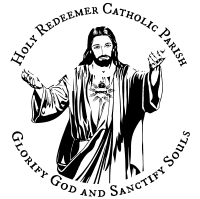The Eucharist, Part 11
Jesus Christ: Yesterday, Today, and Forever ~
Today we continue our twenty part series on the Eucharist. In case you missed the first three, you can find them here. This is in keeping with Archbishop Etienne’s pastoral letter on the Eucharist that you can find here (in case you missed it). Enjoy.
May God Bless You,
Fr. Thomas Nathe
Trent Horn, 20 Answers – The Eucharist. Catholic Answers Press. 2015
Get your own copy from Catholic.com
Question #11:
What happens when the Eucharist is consecrated at Mass?
According to the U.S. Conference of Catholic Bishops, “The Eucharistic Prayer is the heart of the Liturgy of the Eucharist. In this prayer, the celebrant acts in the person of Christ as head of his body, the Church. He gathers not only the bread and the wine, but the substance of our lives and joins them to Christ’s perfect sacrifice, offering them to the Father.”
The General Instruction of the Roman Missal (GIRM) lists the following elements in the Eucharistic Prayer:
The thanksgiving: The priest, in the name of all God’s people, glorifies and gives thanks to the Father. The priest then gives thanks for the whole work of salvation or for some particular aspect of it, according to the liturgical season in which the Mass is being celebrated.
The acclamation: The congregation joins with the choir of angels and saints in heaven and recites the Sanctus (Holy, Holy, Holy).
The epiclesis: The Church implores the power of the Holy Spirit to cause the gifts offered by human hands to become Christ’s Body and Blood. The Church also asks that Christ’s sacrifice be consumed for the salvation of those who partake of it.
The institution narrative and consecration: By repeating Christ’s words and actions at the Last Supper, the sacrifice he instituted is perpetuated.
The anamnesis: The Church fulfills Christ’s memorial command by recalling his Passion, glorious Resurrection, and Ascension into heaven.
The oblation: The Church offers the sinless Eucharistic sacrifice through the Holy Spirit to the Father. The Church also intends that the faithful offer themselves so that, through the mediation of Christ, they can be brought into unity with God and with one another.
The intercessions: The Eucharist is celebrated in communion with the whole Church, of both heaven and earth. All her members, living and dead, are called to participate in the redemption and salvation purchased by the body and blood of Christ.
The concluding doxology: The glorification of God is expressed and is affirmed by the people’s acclamation “Amen.”
In his encyclical Ecclesia de Eucharistia, Pope St. John Paul II taught that “it is the ordained priest who, acting in the person of Christ, brings about the Eucharistic sacrifice and offers it to God in the name of all the people. For this reason, the Roman Missal prescribes that only the priest should recite the Eucharistic Prayer, while the people participate in faith and in silence.”
According to the GIRM, “The nature of the presidential texts demands that they be spoken in a loud and clear voice and that everyone present listen with attention. While the priest is speaking these texts, there should be no other prayer or liturgical song, and the organ or other instruments should not be played.”
Many people ask exactly when during the this part of Mass the bread and wine become the body and blood of Christ. According to the Catechism, this occurs as the priest utters the words of institution, or the words Jesus spoke at the Last Supper that include the phrase “this is my body.” These words “[by] the power of the words and action of Christ, and the power of the Holy Spirit, make sacramentally present under the species of bread and wine Christ’s body and blood, his sacrifice offered on the cross once for all” (CCC 1353).

